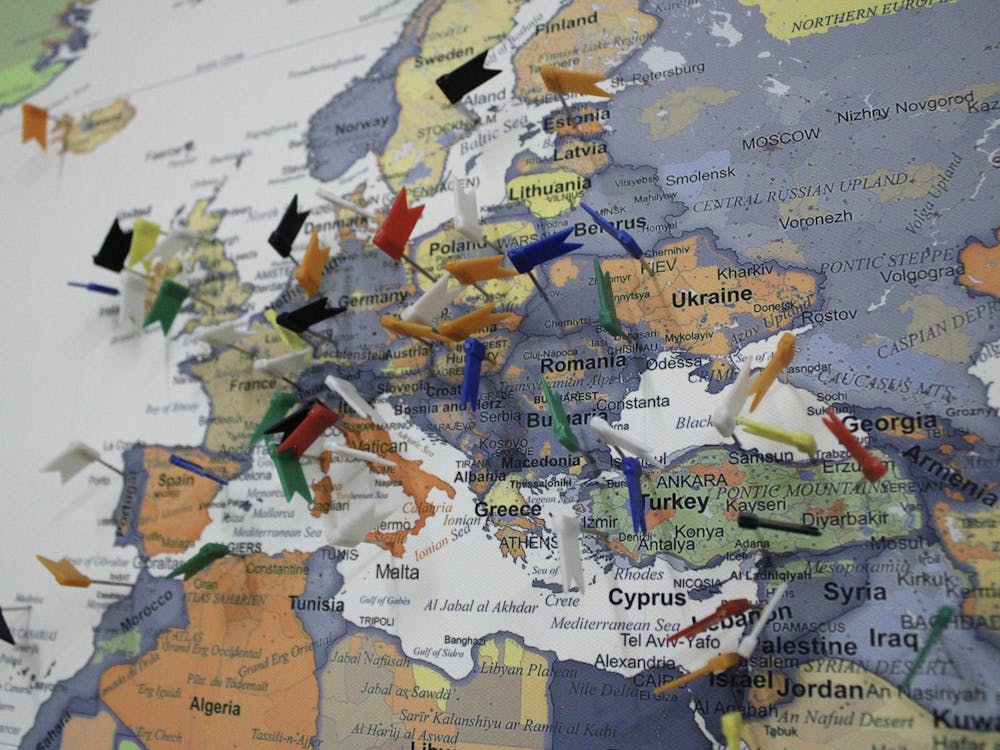STUDENTS, by definition, live their lives by numbers. Alkways striving for excellence in the classroom, our worth ultimately is reduced to biannual reports of GPAs and credit hours earned. It shouldn't be surprising, then, that we extend our reliance on numerical determinations of worth to the analysis of our University and the education it provides. We look at a drop in ranking, for example, as a devastating commentary on our school's caliber and, as an extension, the caliber of its students.
As most students know, the U.S. News & World Report rankings placed the University behind the University of California-Berkeley this year, stripping us of the "No. 1 public university" title. Though certainly we should strive to regain our position from a strictly prestige-seeking viewpoint, this slight slip creates an impetus for some much-needed self-evaluation at the University.
Examining the specifics of the U.S. News rankings reveals some interesting trends. On a scale of 1-5, Berkeley outranks the University 4.7 to 4.3 in academic reputation, the most highly weighted category. Investigating the sub-components of this area reflects a problem also apparent in the rest of the University's profile - a lack of appropriate resources.
With a 13/1 faculty to student ratio, 94 percent full-time faculty and a 92 percent average graduation rate, the University leads Berkeley in three important areas of academic concern. We fall short, however, in comparisons between the schools in terms of the number of classes taught by TAs and the number of courses offered with less than 20 students. We could dwell on the admittedly questionable validity of these last two categories, asking questions like, "Is there a great difference between a TA in her final year as a Ph.D. student and a brand new professor?" or "How do classes with 19 students compare to those with 21?" But instead we should determine why the discrepancies between the universities exist.
Other categories compared by U.S. News & World Report reveal further examples relating rank to resource availability (or scarcity). The University meets 50 percent of students' needs for financial assistance; Berkeley meets 68 percent. Our in-state students' expenditures total $8,719; California students spend $12,306 at Berkeley. Not surprisingly, then, we are outranked 40 to 62 in the financial resources category.
The lack of state support for all colleges and universities in the Commonwealth annually draws attention in the media and in political circles. In a search for the keywords "tuition freeze" in the Cavalier Daily archives, 113 hits from articles written between 1995 and 1999 revealed on-going discussion of the University's financial situation. The much-debated tuition freeze - a supposed Godsend for Virginians and the devil in disguise for the rest of the University community - has held in-state tuition rates steady for the past four years.
Increases in out-of-state tuition to compensate have, as yet, met only with grumblings from current out-of-state students. But who knows what long-term effects the freeze could have if extended again beyond 2000, forcing out-of-state tuition to make up the difference. The University accepts more and more students each year and now is building another dormitory on Alderman Road to accommodate the ever-expanding first-year class.
Our acceptance rate stands at 34 percent while Berkeley takes only 28 percent of its applicants. Because Virginia residents continue to pay the same rates they did in 1996, more students must be admitted or more out-of-state money must pad the coffers to provide for inflation effects and increased costs of University maintenance. Either option could affect the University negatively in the long run.
If the entering class grows each year, the acceptance rate also might increase - as long as the number of applicants doesn't change too much - altering the University's reputation as a highly selective institution. Increasing out-of-state tuition to levels approaching those of private schools removes the University's edge over these schools. Many out-of-state students consider the University an amazing bargain because they get a stellar education for far less than they would pay at private schools of equal caliber.
Losing out-of-state students would decrease the University's revenue significantly since each student's tuition, fees, room and board total $21,192. Thus, even more Virginia students would be admitted to make up for depleted out-of-state numbers. According to the U.S. News and World Report statistics, 95 percent of Berkeley students graduated in the top 10 percent of their high school class, while only 79 percent of University students can claim the same honor. This discrepancy again emphasizes the decreasing level of selectivity at the University. Such a trend will result in waning interest in the University.
Raising in-state tuition to a level reasonable in today's economy, rather than holding it steady at the 1996 rate, would allow the University to curb out-of-state tuition hikes, keeping them within the confines of reasonable market fluctuations. As well, the University would be able to admit fewer students, retain its selective reputation and alleviate some of the class-crowding problems now pending.
There's more to life than the U.S. News rankings. But what they reveal about the University's shortcomings and areas for possible improvement make them a useful tool. Don't worry - the University is not in immediate danger of plummeting to the depths of the country's higher learning hierarchy. But it is in danger of losing quality students and faculty if it cannot find ways to increase its depleting resources.
(Amy Startt's column appears Wednesdays in The Cavalier Daily.)






